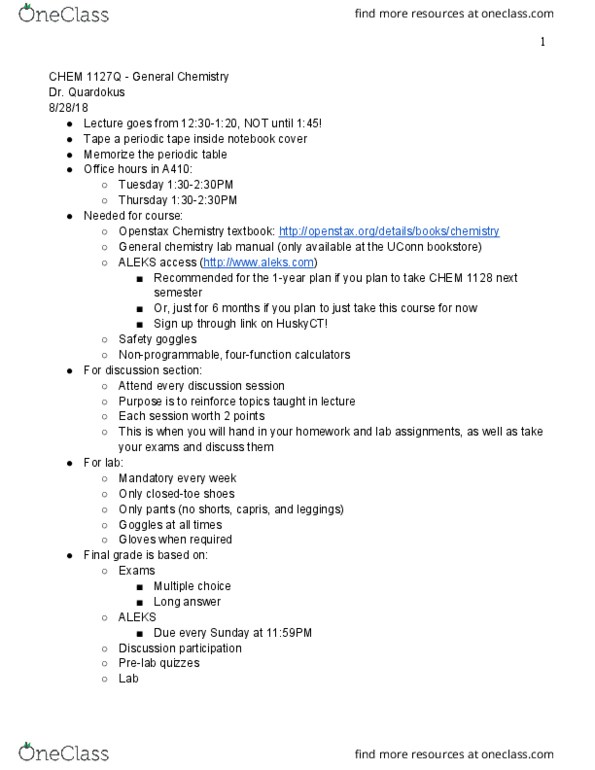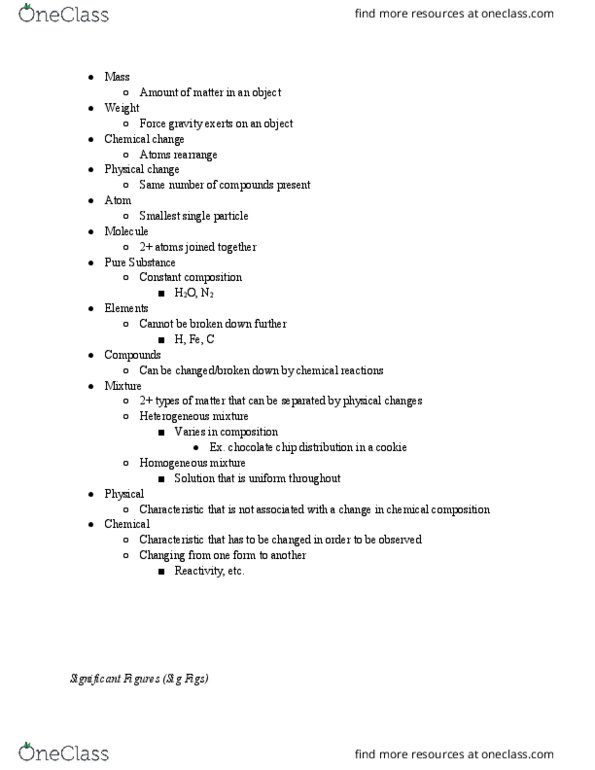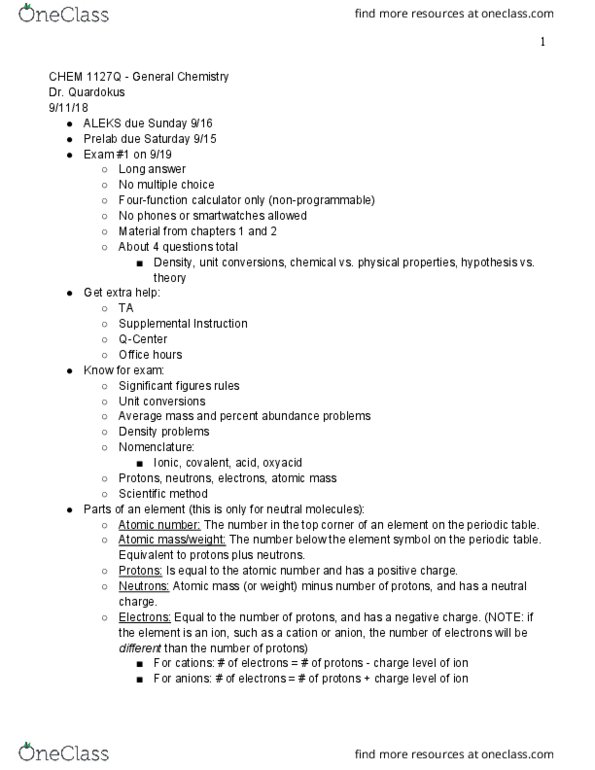CHEM 1127Q Lecture 5: CHEM 1127Q - Lecture 5 - Parts of the Atom & Compounds
CHEM 1127Q verified notes
5/5View all
Document Summary
Density, unit conversions, chemical vs. physical properties, hypothesis vs. Parts of an element (this is only for neutral molecules): Atomic number: the number in the top corner of an element on the periodic table. Atomic mass/weight: the number below the element symbol on the periodic table. Protons: is equal to the atomic number and has a positive charge. Neutrons: atomic mass (or weight) minus number of protons, and has a neutral charge. Electrons: equal to the number of protons, and has a negative charge. (note: if the element is an ion, such as a cation or anion, the number of electrons will be different than the number of protons) For cations: # of electrons = # of protons - charge level of ion. For anions: # of electrons = # of protons + charge level of ion. There are multiple names for an atom. Keep in mind, metalloids are typically classified as nonmetals. Made up of ions (cation and anion)




